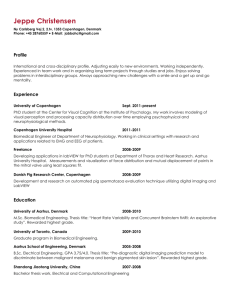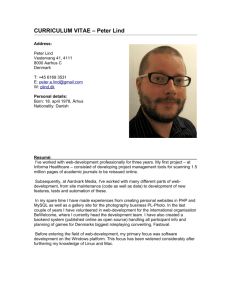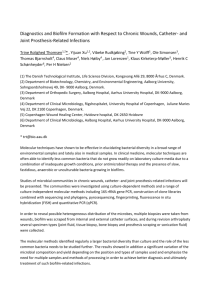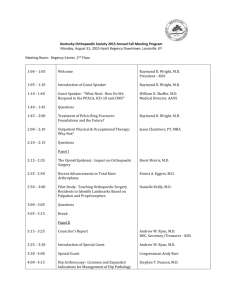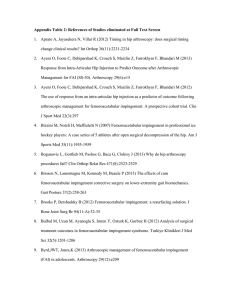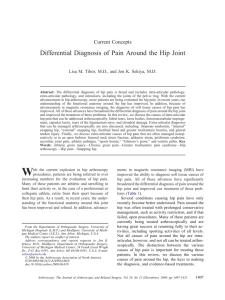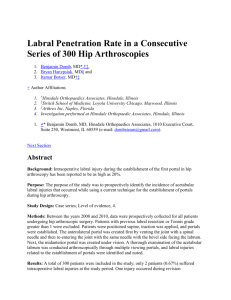Danish Hip Arthroscopy Registry: An epidemiologic and
advertisement
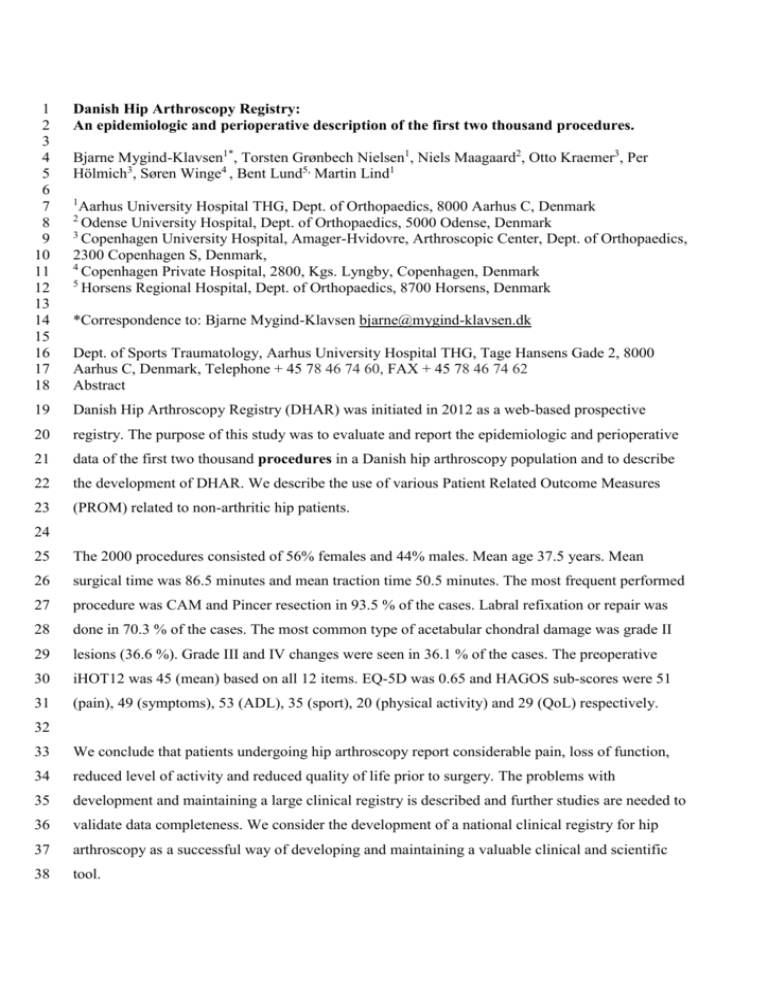
1 2 3 4 5 6 7 8 9 10 11 12 13 14 15 16 17 18 Danish Hip Arthroscopy Registry: An epidemiologic and perioperative description of the first two thousand procedures. 19 Danish Hip Arthroscopy Registry (DHAR) was initiated in 2012 as a web-based prospective 20 registry. The purpose of this study was to evaluate and report the epidemiologic and perioperative 21 data of the first two thousand procedures in a Danish hip arthroscopy population and to describe 22 the development of DHAR. We describe the use of various Patient Related Outcome Measures 23 (PROM) related to non-arthritic hip patients. Bjarne Mygind-Klavsen1*, Torsten Grønbech Nielsen1, Niels Maagaard2, Otto Kraemer3, Per Hölmich3, Søren Winge4 , Bent Lund5, Martin Lind1 1 Aarhus University Hospital THG, Dept. of Orthopaedics, 8000 Aarhus C, Denmark Odense University Hospital, Dept. of Orthopaedics, 5000 Odense, Denmark 3 Copenhagen University Hospital, Amager-Hvidovre, Arthroscopic Center, Dept. of Orthopaedics, 2300 Copenhagen S, Denmark, 4 Copenhagen Private Hospital, 2800, Kgs. Lyngby, Copenhagen, Denmark 5 Horsens Regional Hospital, Dept. of Orthopaedics, 8700 Horsens, Denmark 2 *Correspondence to: Bjarne Mygind-Klavsen bjarne@mygind-klavsen.dk Dept. of Sports Traumatology, Aarhus University Hospital THG, Tage Hansens Gade 2, 8000 Aarhus C, Denmark, Telephone + 45 78 46 74 60, FAX + 45 78 46 74 62 Abstract 24 25 The 2000 procedures consisted of 56% females and 44% males. Mean age 37.5 years. Mean 26 surgical time was 86.5 minutes and mean traction time 50.5 minutes. The most frequent performed 27 procedure was CAM and Pincer resection in 93.5 % of the cases. Labral refixation or repair was 28 done in 70.3 % of the cases. The most common type of acetabular chondral damage was grade II 29 lesions (36.6 %). Grade III and IV changes were seen in 36.1 % of the cases. The preoperative 30 iHOT12 was 45 (mean) based on all 12 items. EQ-5D was 0.65 and HAGOS sub-scores were 51 31 (pain), 49 (symptoms), 53 (ADL), 35 (sport), 20 (physical activity) and 29 (QoL) respectively. 32 33 We conclude that patients undergoing hip arthroscopy report considerable pain, loss of function, 34 reduced level of activity and reduced quality of life prior to surgery. The problems with 35 development and maintaining a large clinical registry is described and further studies are needed to 36 validate data completeness. We consider the development of a national clinical registry for hip 37 arthroscopy as a successful way of developing and maintaining a valuable clinical and scientific 38 tool.

